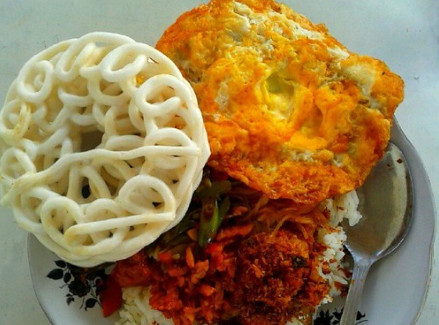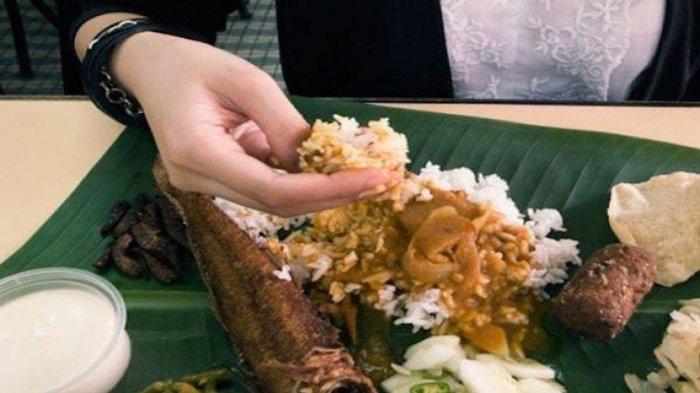Hold on to your hats, folks, because we’re about to dive into the wonderful, baffling, and downright hilarious world of Indonesian habits. If you’ve ever found yourself scratching your head at some of the things Indonesians do, don’t worry—you’re not alone. Let’s peel back the layers on four of the most famous (and sometimes infamous) cultural quirks, all with a healthy dose of humor.
Indonesian Habits Kerokan: The Bruise-tiful Art of Beating a Cold
Picture this: you’re feeling under the weather. Maybe your throat’s a little scratchy, your nose is stuffy, and a general malaise has taken up residence in your body. In many parts of the world, you’d reach for a bottle of cold medicine, chug some orange juice, and maybe binge-watch your favorite show. But in Indonesia? Oh no. You get out the change jar, an old spoon, and a bottle of some very aromatic oil.

This is kerokan, and it’s basically the Indonesian version of a Viking bloodletting ceremony, but with less swords and more spare change. The goal is to scrape your skin until it looks like you lost a fight with a spiky kitten. The theory is that this scraping—done with the aforementioned coin, a piece of ginger, or even a special horn—releases the “wind” that’s causing your illness.
To an outsider, the sight of a person with angry, red stripes all over their back might be a cause for concern. You might think, “My goodness, did a tiger attack you?” But for the person receiving the kerokan, those stripes are a badge of honor.
They’re a visual representation of progress, a road map of your journey back to health. The darker the stripes, the more “wind” you had, and the more effective the treatment was. It’s a competitive sport, really. You want to have the darkest, most impressive kerokan marks to show off to your friends and family. “Oh, you just had a little cold? Look at my back—I was practically a human pinata!”
Kerokan is a testament to the idea that if it stings a little, it must be working. It’s a no-nonsense, low-tech solution to modern ailments. Forget expensive medicines; all you need is a coin and a strong-willed family member to scrape you back to life. It’s a unique blend of folk medicine, pain-for-gain philosophy, and the kind of tough love only a good scrape can provide.
Nasi and Kerupuk: A Love Story More Enduring Than Twilight
In the annals of great culinary pairings—mac and cheese, peanut butter and jelly, cookies and milk—there is one that reigns supreme in Indonesia: nasi (rice) and kerupuk (crackers). These two are like that inseparable couple you know. They’re never seen apart. You don’t just have rice; you have rice and kerupuk. You don’t just have kerupuk; you have kerupuk to go with your rice. It’s a codependent relationship built on a foundation of carb-on-carb love.

Kerupuk come in all shapes, sizes, and colors. There are big ones, small ones, ones that taste like fish, and ones that are so light and airy you could almost use them as packing peanuts. They are the essential crunchy sidekick to every meal. Imagine a symphony where the main dish is the melodic violin, and kerupuk is the percussive triangle, adding that vital, satisfying CRUNCH to every bite.
Eating a meal without kerupuk is like watching a movie with the sound turned off. It’s just not right. You’ll see people meticulously breaking a large cracker into smaller, manageable pieces to use as a scoop for their rice and sambal. It’s a strategic operation. The meal isn’t just about the flavor; it’s about the texture. That contrast between the soft, fluffy rice and the loud, crispy cracker is what makes the whole thing a complete experience.
The saying “Ada nasi, ada kerupuk” (where there is rice, there are crackers) is not just a phrase; it’s a law of physics. It’s a philosophical statement. It’s a promise. It’s a promise that no matter how good your main dish is, it won’t be truly complete until you add a little crunch.
Eating with Your Hands: A Hands-On Approach to Gastronomy
Now, let’s talk about the elegant, civilized, and deeply personal act of eating with your hands. While many cultures prefer to put a barrier of metal between their mouth and their food, Indonesians often embrace a more direct approach.

The first rule of thumb (pun intended) is to only use your right hand. Your left hand is a no-go zone, reserved for, well, let’s just say, less appetizing tasks. So, with your right hand, you become an expert food sculptor. You learn to gather a little rice, a piece of chicken, a dollop of chili sauce, and maybe a bit of vegetable into a perfect, bite-sized ball. It’s like a miniature, edible claymation project happening right in the palm of your hand.
For the uninitiated, this might seem a little messy. And to be fair, it sometimes is. But the feeling of getting a little food on your fingers is part of the fun. It’s a primal, sensory experience that connects you to your meal in a way a spoon never could. It’s about feeling the temperature of the rice, the texture of the chicken, and the slickness of the sauce.
For many, eating with their hands is not just a habit; it’s a celebration. It’s most common for traditional dishes like ayam penyet (smashed fried chicken) or sambal. It’s a communal activity that fosters a sense of togetherness and informality. The joy isn’t just in the food itself, but in the process of eating it with your bare hands, sharing stories, and laughing with the people around you. It’s a messy, wonderful, and utterly freeing way to enjoy a meal.
The Unspoken Rule: If There’s No Rice, It’s Not a Meal
Here’s a concept that might blow your mind: you can eat a sandwich, a bowl of noodles, or a plate of pasta, and still not be considered to have “eaten.” That’s because in Indonesia, the definition of a meal is inextricably linked to one thing: rice.

The word for a meal, makan, is almost synonymous with eating rice. If you say you’ve “had a meal,” everyone assumes you’ve had rice. If you say you “haven’t eaten yet” (belum makan), it doesn’t matter that you just devoured two plates of spaghetti. You haven’t had rice, so you’re still technically hungry.
This cultural perspective is so ingrained that it can lead to some comical misunderstandings. You’ll see a person who has just finished a huge bowl of ramen declare, “I’m so hungry, I haven’t eaten all day!” And when you ask what they’ve been doing, they’ll list off a series of non-rice foods. It’s a logic puzzle that only an Indonesian can solve.
This reliance on rice as the ultimate culinary benchmark means that anything else is just a snack or an appetizer. A burger? A delicious, but ultimately temporary, distraction. A bowl of cereal? Just something to tide you over. The true feeling of being full, of being truly satisfied, only comes after you’ve had a plate of nasi. It’s a culinary truth, a nutritional law, and the foundation upon which all Indonesian diets are built.
So, there you have it. The four habits that make Indonesian culture so unique and so endearingly strange. From the questionable beauty of kerokan marks to the absolute necessity of a rice-based meal, these traditions are a testament to the fact that what seems “weird” to one person is just a perfectly normal part of life to another. And hey, maybe a little kerokan will do us all some good after reading this.
